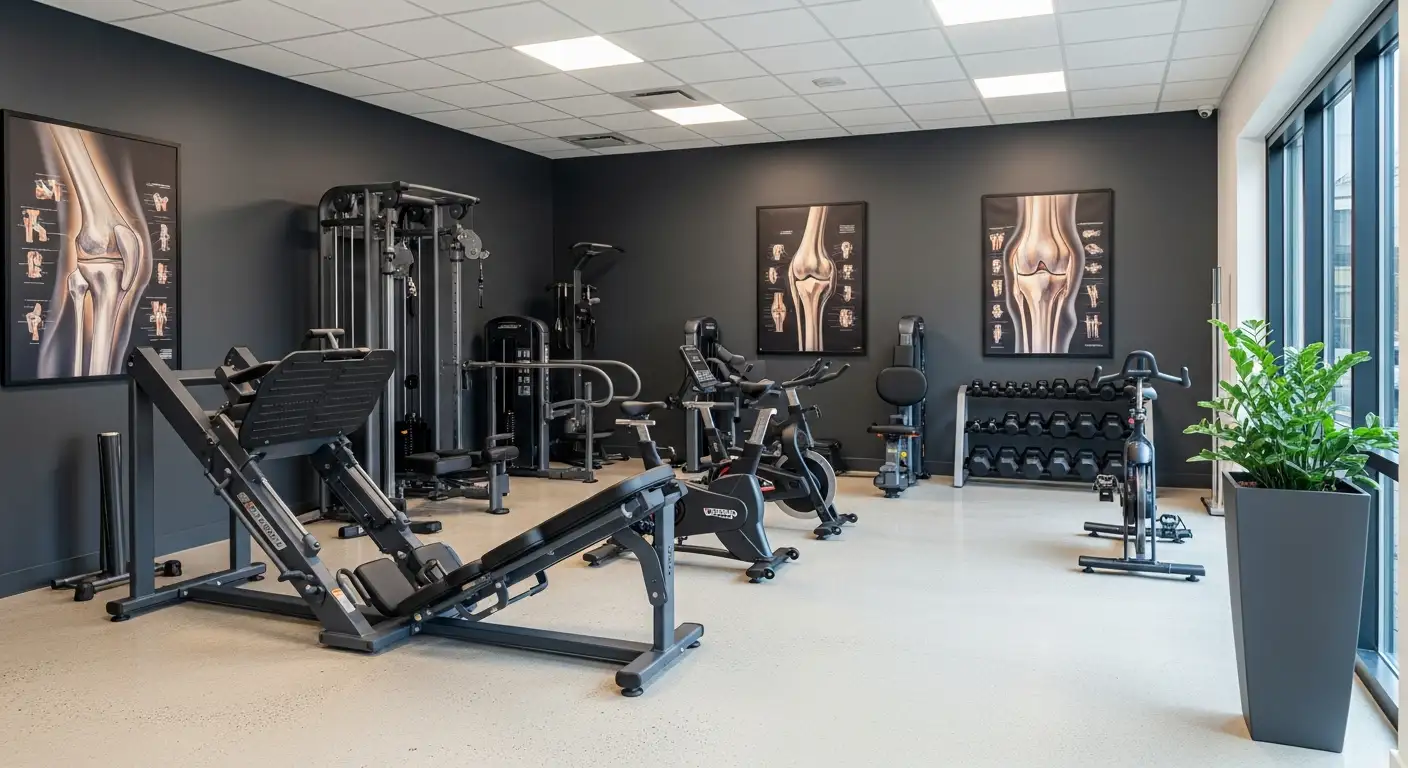Understanding Arthroscopic Knee Surgery
Arthroscopic knee surgery is a procedure that has transformed the diagnosis and treatment of knee injuries. This section will provide an overview of what the surgery entails and the different types that exist.
What is Arthroscopic Knee Surgery
Arthroscopic knee surgery is a minimally invasive procedure used by healthcare providers to diagnose and treat knee injuries. The procedure involves making a small incision and inserting a thin tool with a camera, called an arthroscope, to view the inside of the knee. This visual access aids in the precise diagnosis and treatment of injuries, minimizing the need for larger, more invasive surgeries.

It's important to note that a knee arthroscopy surgical procedure is typically performed as an outpatient procedure and can last less than 30 minutes or over an hour, depending on the specific requirements at the time of surgery [2].
Types of Arthroscopic Knee Surgeries
Arthroscopic knee surgery is not a one-size-fits-all procedure. It can be performed for various reasons, and the specific type of surgery will depend on the nature of the knee injury.
Primarily, arthroscopic knee surgery is recommended for individuals with knee pain that does not improve with nonsurgical treatments. It can be used to diagnose and treat conditions like meniscal tears, ligament damage, and loose body removal. However, it's important to note that arthroscopic knee surgery is not always effective for treating osteoarthritis.
Given the diversity of knee injuries, it's crucial to have a thorough understanding of the specific type of arthroscopic knee surgery you're undergoing. Each type has its own recovery timeline, which is a critical factor when considering how long to recover from arthroscopic knee surgery.
The following table illustrates some common types of arthroscopic knee surgeries:
Arthroscopic knee surgery's nature allows for a detailed investigation of the knee's internal structures, making it a valuable tool in modern orthopedics. However, as with any surgical procedure, it's important to understand what it involves and the expected recovery timeline.
The Procedure of Arthroscopic Knee Surgery
The process of arthroscopic knee surgery involves a careful balance of surgical intervention and post-operative care. It's important to understand the duration and specifics of the surgery, as well as what to expect after the operation.
Duration and Process of the Surgery
The duration of a knee arthroscopy surgical procedure can vary significantly, typically lasting less than 30 minutes or extending over an hour. This largely depends on the specific requirements and complexity of the surgery. The procedure is performed as an outpatient, meaning patients can usually return home the same day.
During the procedure, a small camera, or arthroscope, is inserted into the knee joint through a tiny incision. This allows the surgeon to view the inside of the joint on a screen and guide their instruments accordingly. The arthroscope can be used to diagnose issues, repair or remove damaged tissues, and perform other surgical interventions as needed.
Post-Operative Care
After the surgery, the patient's journey towards recovery begins. Post-operative care plays a crucial role in the healing process and can significantly influence how long it takes to recover from arthroscopic knee surgery.
Patients undergoing routine knee arthroscopy typically need to see the doctor for a reexamination 7-10 days after the operation. However, those who undergo more complex procedures, such as ACL surgery, should have a follow-up within 48 hours.
During the first 3 days post-surgery, patients should keep their dressings clean and dry. After this period, they can shower as usual but should avoid soaking the incisions until after their first post-op appointment.
It's also advised that patients avoid driving while they're still on pain medication post-surgery. This helps ensure their safety and the safety of others.
Lastly, patients may start physical therapy the week following the surgery. This helps to restore strength and flexibility in the knee and is a critical component of the recovery process [4].
Recovery Timeline after Arthroscopic Knee Surgery
The recovery time can vary significantly depending on the type of arthroscopic knee surgery performed and the individual's overall health. Here, we'll break down the recovery timeline into two broad phases: the early recovery phase and the long-term recovery phase.
Early Recovery Phase
During the early recovery phase, patients typically return to desk work, school, or sedentary activities 3 to 5 days after the arthroscopic knee surgery. Heavier work may require 4 to 6 weeks as the leg regains strength. Driving is often safe 2 weeks after surgery for the right knee, but operating heavy machinery should be avoided while on prescription pain relievers [5].
Patients generally begin higher-level activities during physical therapy visits around 4 weeks after the surgery, with a gradual transition back to sports at 4 to 6 weeks under the guidance of a physical therapist and final approval from the surgeon.
Long-Term Recovery Phase
The long-term recovery phase is typically when patients return to more strenuous activities. Full recovery, which allows for unrestricted running, jumping, and changing direction, could take three to four months, depending on factors like age, overall health, and the type of surgery performed [6].
Patients typically have physical therapy appointments scheduled twice a week for approximately 6 to 8 weeks after arthroscopic knee surgery, focusing on range of motion and strengthening exercises to optimize healing outcomes.
For different types of knee injuries, the recovery timelines can differ. For instance:
- Recovery from arthroscopic ACL ligament reconstruction surgery is typically 6-9 months for healthy, active patients.
- Full healing time for an uncomplicated arthroscopic surgery to remove part of a torn meniscus may take 4-5 months.
- Complicated arthroscopic repair of a meniscus tear requires the knee to be immobilized for 2 weeks post-surgery, followed by limited motion for another 2 weeks. Patients with low-impact jobs can return to work 1-2 weeks post-surgery, drive after 4-6 weeks, and may resume heavy work or sports after 3-6 months.
- For patients with patellar tendon tears, recovery can take 3-6 weeks with physical therapy and wearing a brace. Larger tears and ruptures may require arthroscopic surgery or full open surgery with a longer rehabilitation time of up to 6-12 months [7].
The recovery timeline after arthroscopic knee surgery can vary significantly based on the nature of the injury and the individual's overall health. Therefore, it is essential for patients to follow their healthcare provider's advice to ensure a smooth recovery.
Factors Affecting Recovery from Arthroscopic Knee Surgery
When it comes to understanding how long to recover from arthroscopic knee surgery, it's important to consider the key factors that can influence the recovery process. These factors include the nature of the knee injury and the age and overall health of the patient.
Nature of the Knee Injury
The type and severity of the knee injury significantly impact the recovery time following arthroscopic knee surgery. For example, recovery time from arthroscopic ACL ligament reconstruction surgery is typically 6-9 months for healthy, active patients, with a total recovery time for an ACL reconstruction with meniscus repair ranging from 12-16 weeks [7].
On the other hand, the full healing time for an uncomplicated arthroscopic surgery to remove part of a torn meniscus may take 4-5 months. Meanwhile, a complicated arthroscopic repair of a meniscus tear requires the knee to be immobilized for 2 weeks post-surgery, followed by limited motion for another 2 weeks. Patients can then expect to walk with crutches for 4-6 weeks after surgery.
Age and Overall Health of the Patient
The patient's age and general health status also play a crucial role in the recovery process. Older patients or those with underlying health conditions may require a longer recovery period compared to younger, healthier individuals.
Pre-existing conditions such as diabetes, obesity, or cardiovascular disease can potentially complicate the recovery process and prolong the healing time. Similarly, a patient's lifestyle choices, such as smoking or alcohol consumption, can also affect the healing process post-surgery.
In all cases, it's essential for patients to adhere to their doctor's advice and follow a structured rehabilitation program to facilitate the recovery process. This may include physical therapy sessions, exercises to restore range of motion, and measures to strengthen the knee muscles.
In conclusion, the recovery time from arthroscopic knee surgery can vary significantly depending on the nature of the knee injury and the patient's age and overall health. Therefore, it's important for patients to have a thorough discussion with their surgeon to understand the expected recovery timeline and to plan their post-surgery care accordingly.
Potential Complications Post Arthroscopic Knee Surgery
While arthroscopic knee surgery is often a safe and effective procedure, like any surgery, it does carry some potential risks. Understanding these complications can help individuals be more informed about the recovery process.
Risk of Infection
Infection is a possible complication of knee arthroscopy. It can occur around the incisions (superficial infection) or within the knee joint (deeper infection), with deeper infections requiring additional surgical procedures to address.
According to a study, patients who received higher generation Cephalosporins as surgical prophylaxis had greater odds of developing effusion and superficial infection after arthroscopic surgery. Additionally, patients who did not receive specialist physiotherapy or who had irregular physiotherapy appointments were more likely to develop superficial infection after arthroscopic surgery.
Despite these risks, it's important to note that the overall risk of complications associated with knee arthroscopy is estimated to be approximately 5 percent, with the likelihood of a serious complication being much less than 1 percent.
Possibility of Re-Injury
Another potential complication following arthroscopic knee surgery is the risk of re-injury or further damage to the knee joint. Progression of cartilage damage following arthroscopic knee surgery can lead to a more rapid deterioration of the knee joint cartilage, potentially requiring knee replacement due to conditions like osteonecrosis (spontaneous osteonecrosis of the knee, or SONK).
To mitigate these risks, it's vital for patients to follow all post-operative care instructions and engage in recommended physical therapy. Regular check-ups with their healthcare provider can also help monitor the healing process and catch potential complications early.
While these complications can sound daunting, remember that they are relatively rare, and the vast majority of people who undergo arthroscopic knee surgery recover successfully. It's essential to have open discussions with your healthcare provider about any concerns to ensure you have a clear understanding of what to expect during the recovery process.
Role of Physical Therapy in Recovery
Physical therapy plays a significant role in the recovery process after arthroscopic knee surgery. It aims to help patients regain strength and mobility, increase flexibility, and strengthen knee-supporting muscles to prevent further injury. A customized physical therapy program will include specific exercises tailored to the individual's needs.
Initial Therapy Sessions
Patients typically have physical therapy appointments scheduled twice a week for approximately 6 to 8 weeks after arthroscopic knee surgery. These initial sessions focus on range of motion and strengthening exercises to optimize healing outcomes [5].
It's crucial for patients to maintain consistency with their rehabilitation appointments until cleared by the doctor. Consistent participation in physical therapy facilitates the recovery process after arthroscopic knee surgery and helps optimize healing outcomes.
Long-Term Physical Therapy Goals
Around 4 weeks after arthroscopic knee surgery, patients typically begin higher-level activities during physical therapy visits. There is a gradual transition back to sports at 4 to 6 weeks, under the guidance of a physical therapist and with final approval from the surgeon.
One of the long-term goals of physical therapy after knee arthroscopy is to enable patients to return to their regular activities while minimizing the risk of re-injury. Some patients who undergo meniscus surgery may experience another tear post-surgery due to inadequate rehabilitation or returning to activities too soon. Proper care and rehabilitation can help in reducing the risk of re-injury, enabling patients to maintain an active lifestyle.
In summary, physical therapy is crucial in the recovery process after arthroscopic knee surgery. It helps patients regain strength and mobility, increases flexibility, and reduces the risk of re-injury. Therefore, patients should adhere to their physical therapy schedule and follow the exercises recommended by their physical therapist to achieve the best possible recovery outcome.
References
[1]: https://my.clevelandclinic.org/health/treatments/17153-knee-arthroscopy
[2]: https://www.verywellhealth.com/risks-of-knee-arthroscopy-4177344
[3]: https://ukhealthcare.uky.edu/orthopaedic-surgery-sports-medicine/treatment/knee-arthroscopy-post-operative-instructions
[5]: https://www.accesssportsmed.com/knee-lower-extremity/meniscectomy-recovery/
[6]: https://www.absiortho.com/blog/5-tips-for-getting-back-in-the-game-after-arthroscopic-knee-surgery
[7]: https://www.orthonorthcounty.com/blog/recovery-from-arthroscopic-knee-repair-surgery-20410.html





